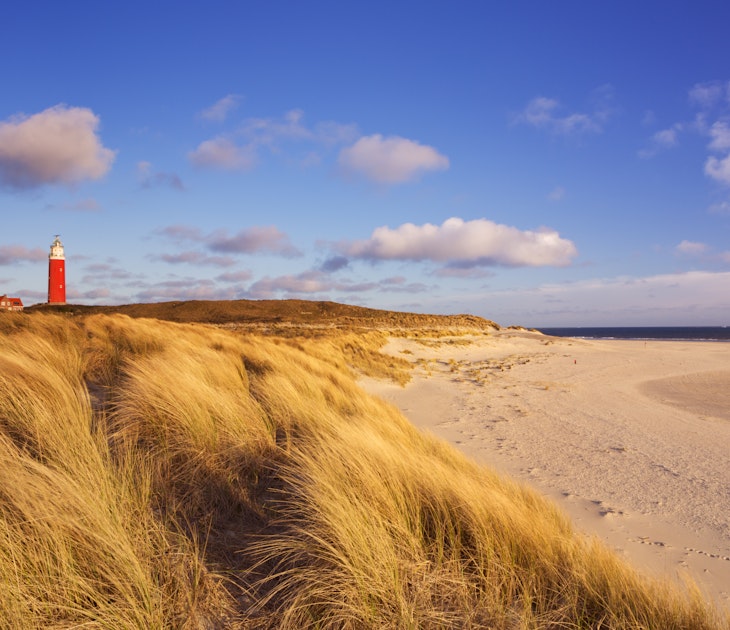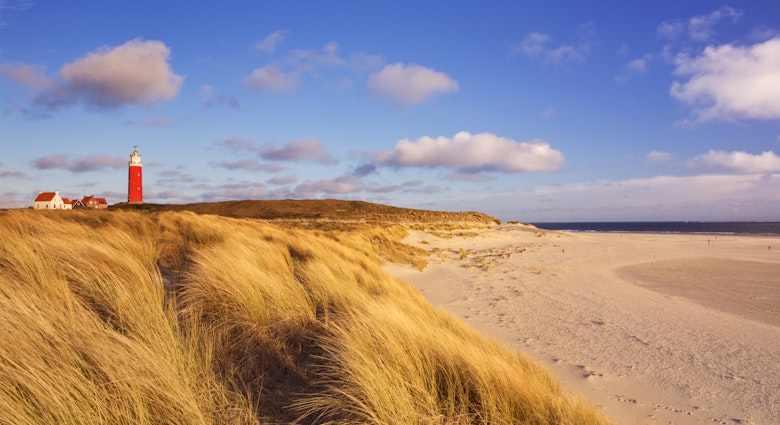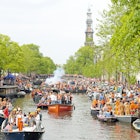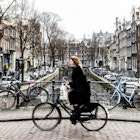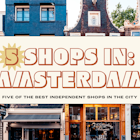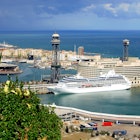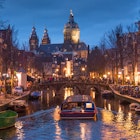The Netherlands packs so much within its compact borders – from its grand cities to green spaces, picturesque waterways and miles of coastline – that it’s easy to take in numerous unique and memorable experiences throughout the country, even on a short trip.
Here are 10 of the very best things to do on your Dutch travels.
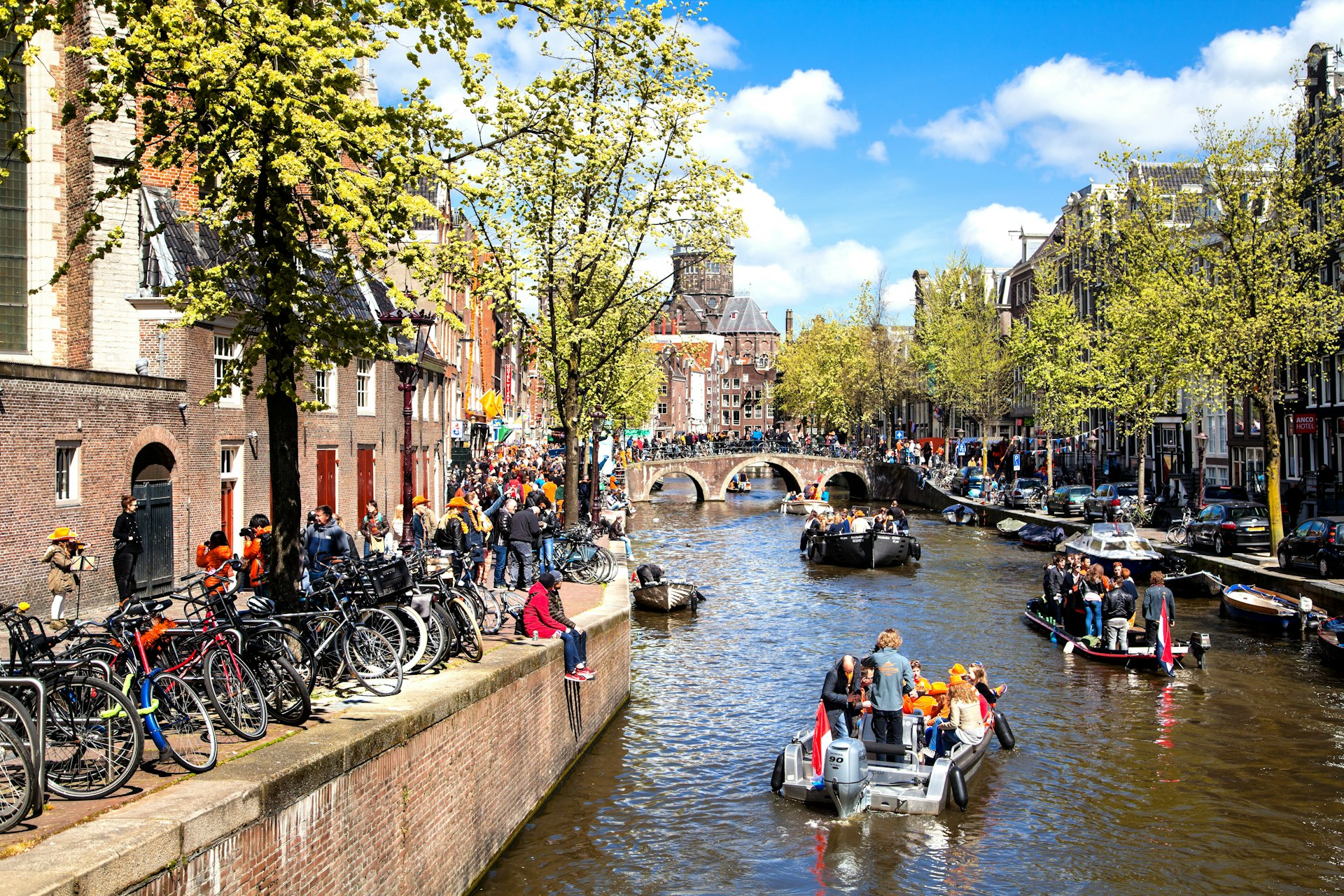
1. Captain an electric boat to explore Amsterdam’s canals
Renting a boat for a few hours lets you navigate Amsterdam’s watery landscape at your own pace. In the city’s UNESCO World Heritage-listed canal ring and surrounding waterways (such as the Amstel river, which gave Amsterdam its name), you can glide past landmarks like the Westerkerk’s belltower, near the Anne Frank Huis, pretty bridges, photogenic canal houses containing charming shops, cozy restaurants and museums, and regenerating docklands. Pick a fine day, pack a picnic from Amsterdam’s street markets and set sail.
Planning tip: Electric boats are free from emissions and noise, and don’t need a boat license or experience (instruction is given at pick up). Book with companies such as Boaty or Eco Boats Amsterdam.
Save these tips on the best free things to do in Amsterdam to take your euros further.
2. View Van Gogh masterpieces in the Hoge Veluwe National Park
A wonderland of pine forests, heath, grassland and sand drifts, roamed by red and roe deer, mouflon and wild boar, the 135-acre (55 sq km) Hoge Veluwe National Park is laced with hiking and biking trails. Amid the trees at the park’s heart, the astonishing Kröller-Müller Museum holds the greatest collection of Van Gogh’s works outside Amsterdam’s Van Gogh Museum, including masterpieces like The Potato Eaters, and more by Monet, Renoir, Seurat, Picasso and Mondriaan, among others. Outside, some 160 sculptures by such luminaries as Rodin, Henry Moore and Barbara Hepworth grace its gardens.
Near the lake at the park’s northern edge, the splendid 1920-completed residence of the founders, Helene Kröller-Müller and her husband Anton, Jachthuis Sint Hubertus, also welcomes visitors.
Planning tip: You’ll need to buy national park tickets in advance or at park entrances. Time-slot tickets for the Kröller-Müller Museum and guided tours of Jachthuis Sint Hubertus must be pre-booked online.
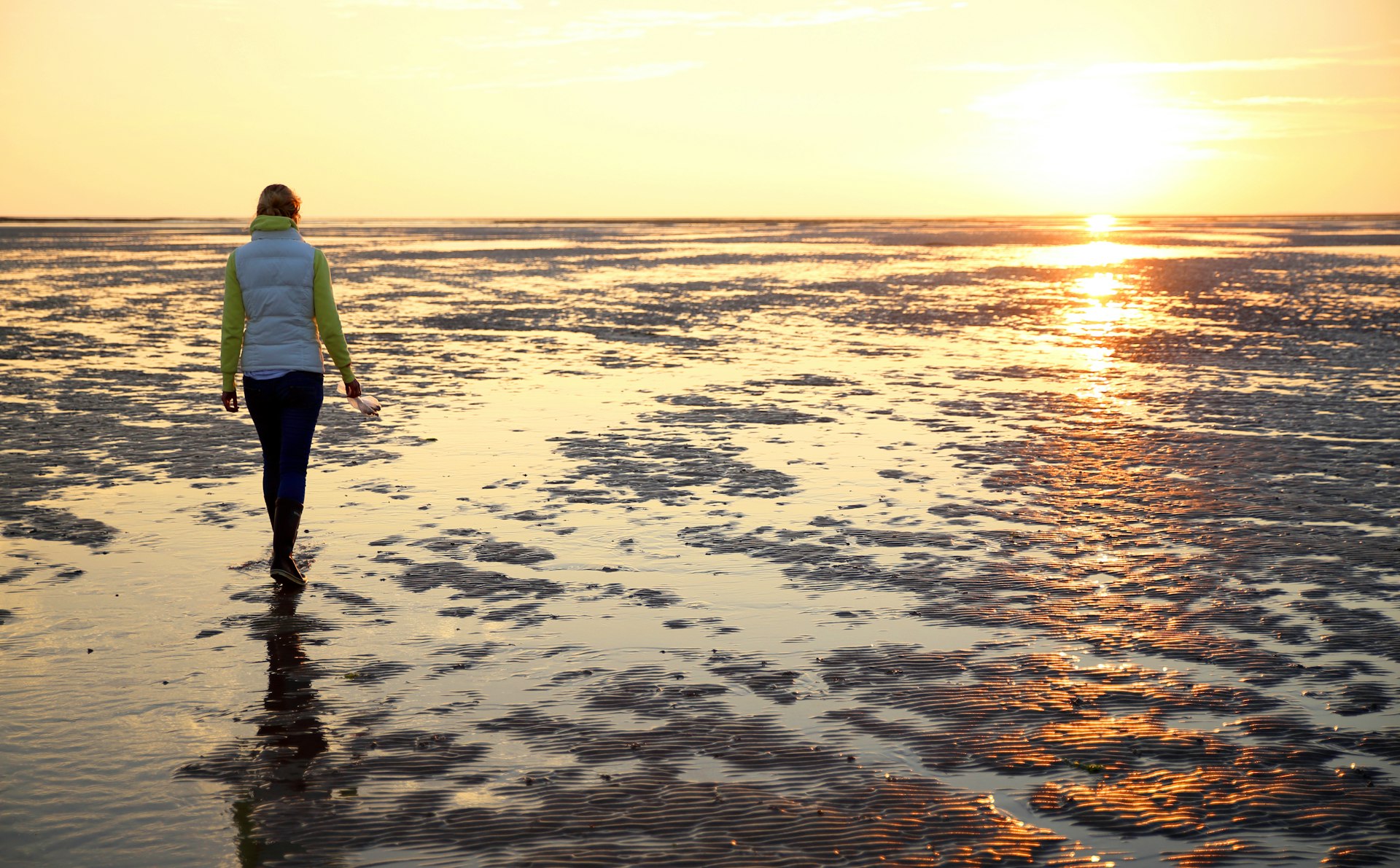
3. Mudwalk on the Wadden Sea
Slogging through gluggy mud might not immediately appeal but wadlopen (“mudwalking”) across vast mudflats, with crabs, clams and cockles underfoot and gulls cawing overhead, is an unforgettable, often mesmerizing, at-one-with-nature experience. At low tide, the Wadden Sea, the world’s largest unbroken intertidal zone, retreats to reveal the seafloor; it’s possible to reach the Frisian islands of Ameland and Schiermonnikoog (shorter, easier treks are available).
Planning tip: On the mainland, north of Groningen, Pieterburen is a prime wadlopen base. It’s vital to go with a trained guide and wear clothing appropriate for the season (many places rent footwear so you don’t damage your own).
4. Visit fairytale medieval castle Muiderslot
Looking like it’s been lifted from the pages of a storybook, with its turreted round towers and surrounding moat, Muiderslot was the 13th-century creation of Count Floris V. Its fortifications were added in the 17th century, ensconcing its flourishing gardens, with a beech alley, kitchen and herb gardens and plum orchard commissioned by its then owner, the historian, poet and playwright PC Hooft, who hosted leading writers, artists and scientists here. Following its renovation by architect Pierre Cuypers (of Amsterdam’s Rijksmuseum and Centraal Station fame), it’s been a national museum since 1878. Themed audio tours bring the castle’s centuries of history to life. Beyond the ramparts, boats fill the pretty pleasure port of Muiden, lined with waterside cafes.
Planning tip: From April to October, a fun way to travel here is by ferry from Amsterdam’s reclaimed island neighborhood of IJburg. During the same months, ferries also run to the late 19th-century UNESCO-listed fortress island of Pampus.
5. Taste Trappist beer and tour the abbey where it’s made near Tilburg
Trappist brewing secrets are normally closely guarded but a visit to La Trappe gives you a rare chance to go behind the scenes. In a beautiful and serene pastoral setting on the outskirts of Tilburg in the Netherlands’ southeast, monks have been brewing since 1884 at Koningshoeven Abbey. On a guided tour, you’ll see the brewing process and abbey buildings, and taste its divine ales.
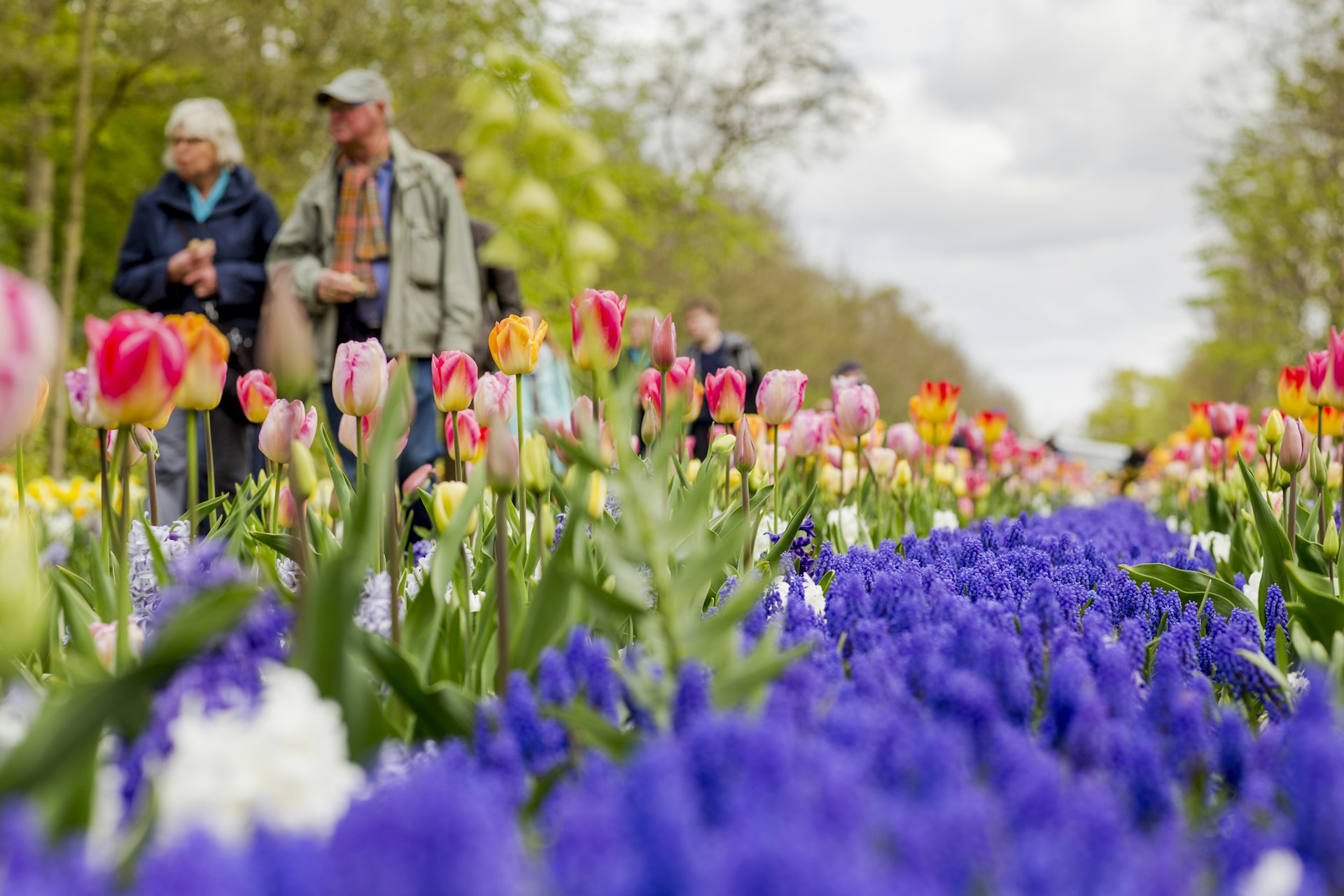
6. Cycle through tulip fields in the Bollenstreek
All your senses come alive as you pedal past fields of vibrantly colored flowers in the Bollenstreek (Bulb Region) along the 21-mile (35km) Bloemenroute. Cycling this fragrant "Flower Route" takes around two to three hours. In spring you’ll see the Netherlands’ famous tulips and other flowers like jonquils and daffodils, while dahlias and sunflowers are among the floral spectacle in summer.
Bollenstreek highlights include Lisse’s intriguing Museum De Zwarte Tulp (Museum of the Black Tulip) and magnificent Keukenhof Gardens, and nearby flower farm De Tulperij in Voorhout.
Planning tip: Leiden makes an ideal base for forays through the tulips, with plenty of places to rent wheels in the city (and region-wide). Downloadable route maps highlight which flowers are in bloom in season.
Lonely Planet's Brian Healy shares his top tulip-viewing tips from a recent trip.
7. Step inside a museum storage facility in Rotterdam
Rotterdam’s foremost art institution the Museum Boijmans Van Beuningen might be closed for renovations until 2029 but it’s still possible to see its exceptional collections. The Depot Boijmans Van Beuningen, in a giant bowl-shaped building covered by 1,664 reflective glass panels, is the storage facility of the entire, 154,000-piece collection. And, in a world first, the public can view its cache of paintings, sculptures and photography in climate-controlled compartments. The building’s tree-topped roof terrace has panoramic views over the striking contemporary skyline of Netherlands’ second-largest city.
Detour: Other venues to see art in the city include the Kunsthal, with changing exhibitions, and TENT and Kunstinstituut Melly, showcasing contemporary works. Serious art lovers should also check out the royal collection at Den Haag’s Mauritshuis, an easy 15 miles north of Rotterdam.
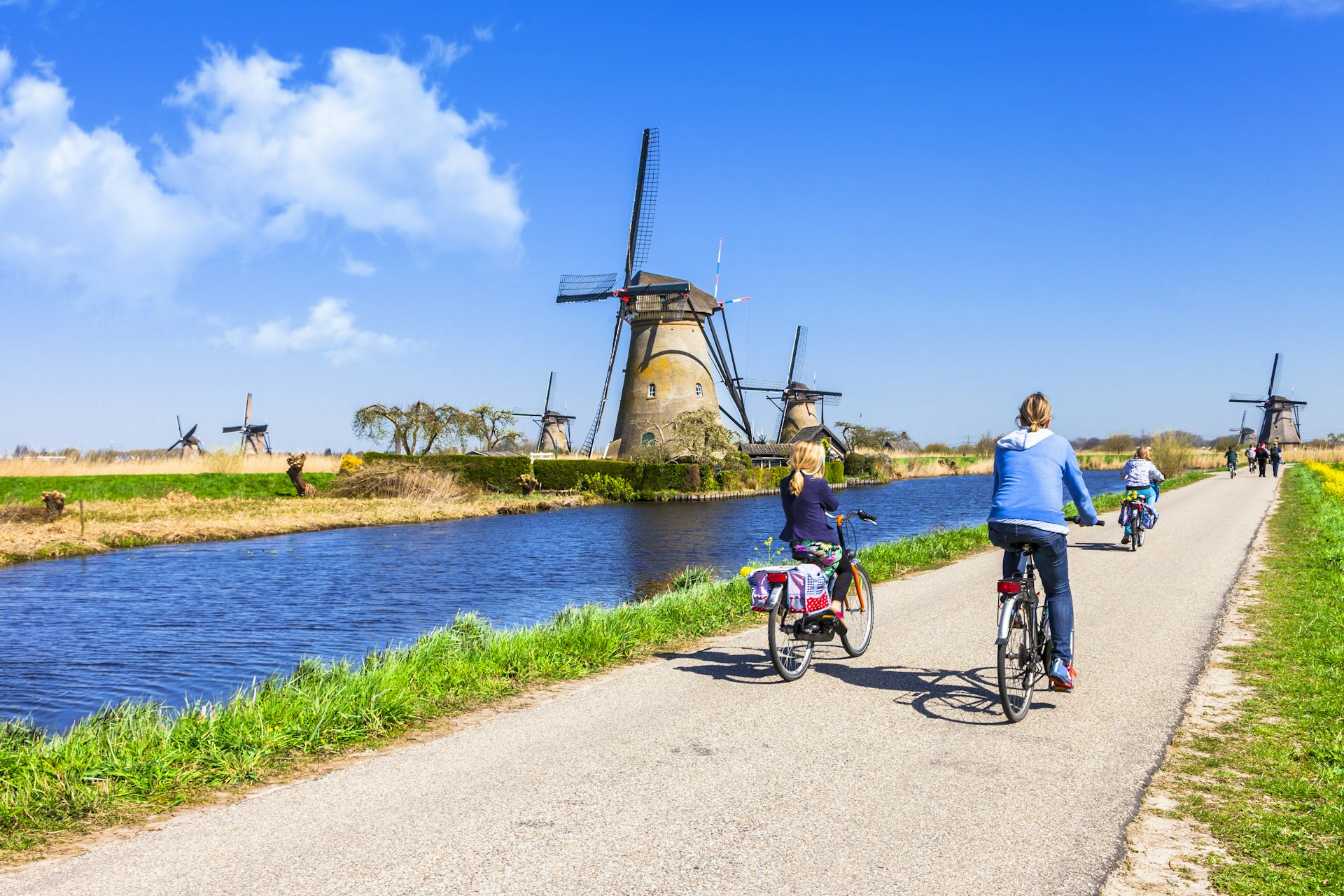
8. Wander past windmills at Kinderdijk
Windmills are a classic fixture of the Dutch landscape, with some 1200 traditional spinners dotted across the countryside. At UNESCO World Heritage site Kinderdijk, 15 miles southeast of Rotterdam, 19 historic brick and timber mills still in operating condition rise above the peaceful waterways and polders (areas of drained land). You can meander (on foot or by bicycle) along the canals’ towpaths, visit museums and take a boat ride beneath the mills’ creaking sails.
Detour: Around 20 miles north of Amsterdam, windmill-filled Zaanse Schans is a working, inhabited village with quaint shops, traditional crafts and millers on hand to explain how windmills work.
Who needs to road trip when you can cycle? Here and the top 11 cycling routes in the Netherlands.
9. Delve into underground caves and passages in Maastricht
To understand the multilayered backstory of spirited southeastern city Maastricht, start by surveying the landscape from lofty Fort Sint Pieter. This hulking 1701-built defensive fortress sits within a deep-cut dry moat. Stroll the surrounding paths, then take a subterranean tour of the city’s honeycomb of caves and passages with Maastricht Underground to uncover the city’s Roman, Napoleonic and WWII history.
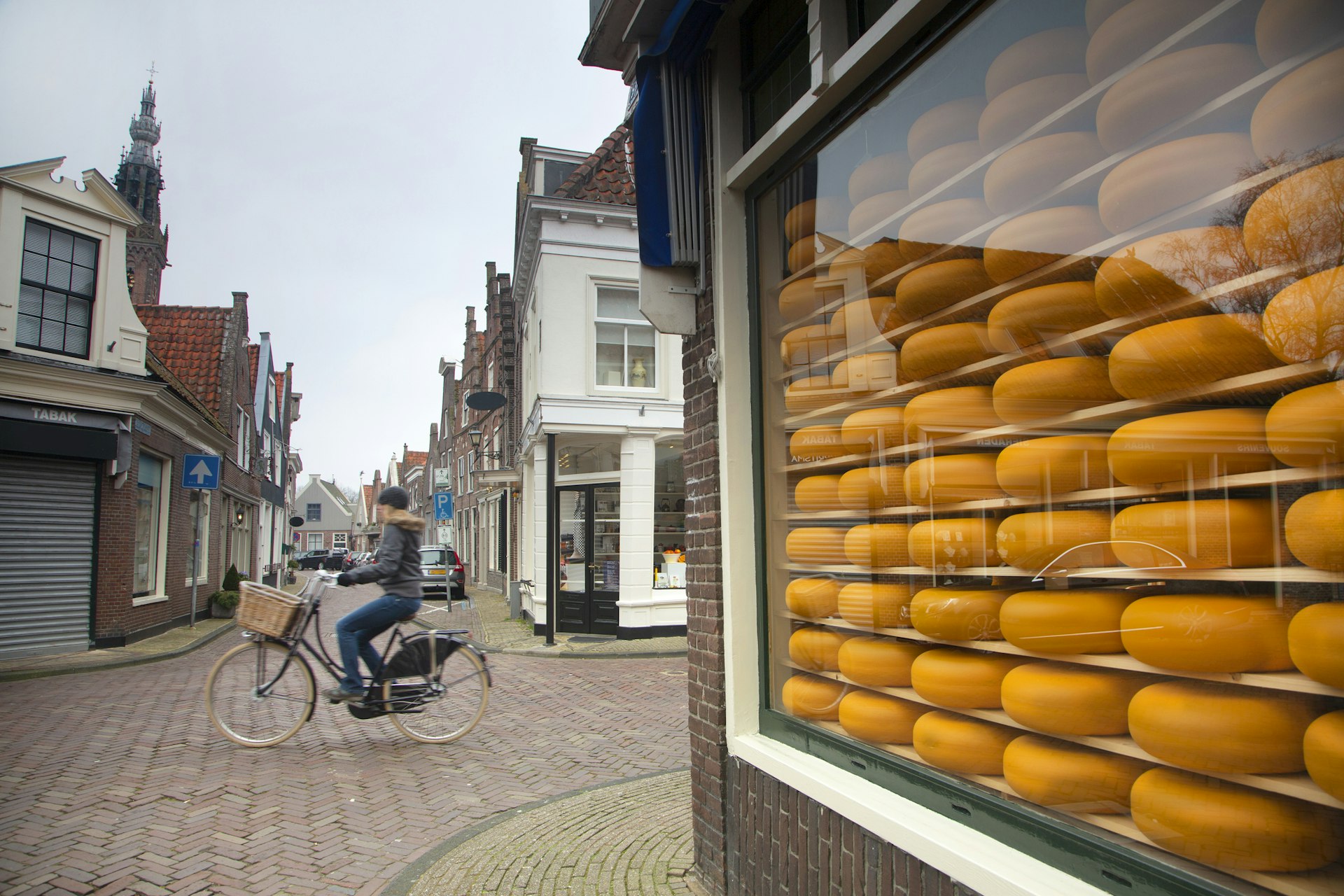
10. Eat cheese in Edam
Edam is synonymous with its round, red-rind, mild cows-milk cheese and the town has plenty of opportunities to indulge at restaurants, aromatic shops (Henri Willig occupies a 16th-century building) and, most atmospherically, its cheese market – held on Wednesday mornings in summer – when costumed locals enthusiastically recreate the trading of a bygone era and you can buy cheeses produced on local farms.
Cheese aside, Edam is a charming place to stroll the narrow streets lined with historic recalling its prosperous ship-building heritage and cruise its picturesque waterways.
Planning tip: Edam makes an easy and enjoyable 14-mile (22km) bike ride north of Amsterdam.

